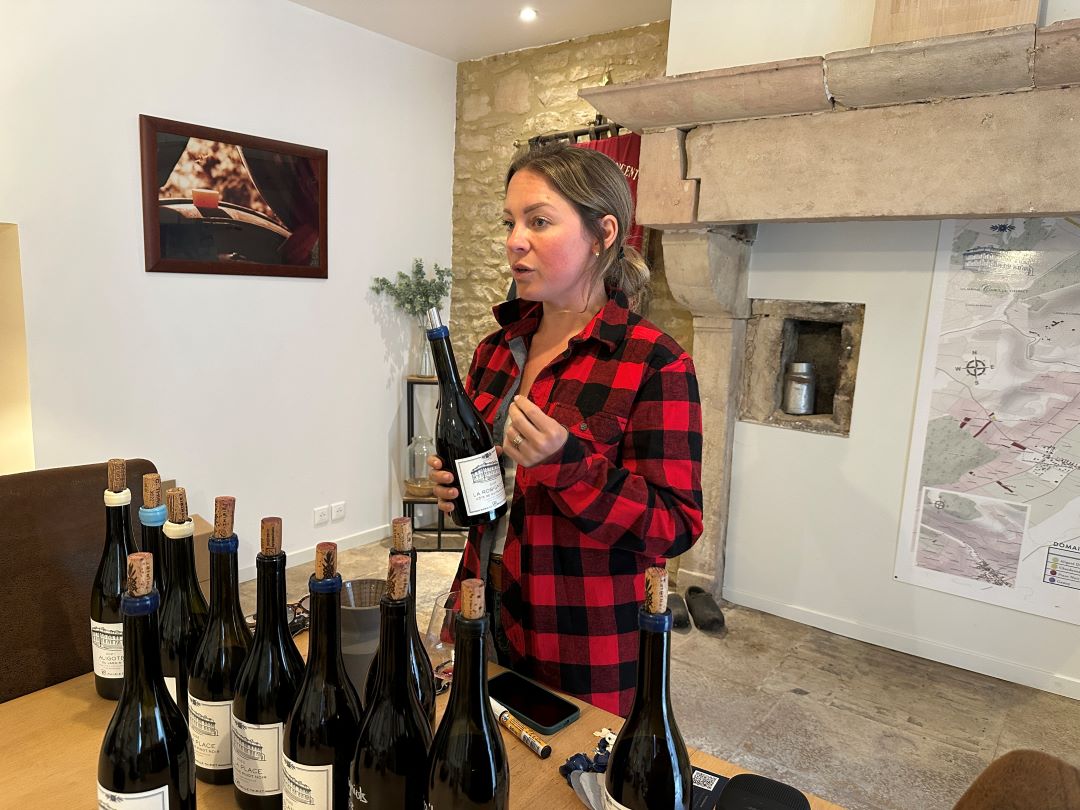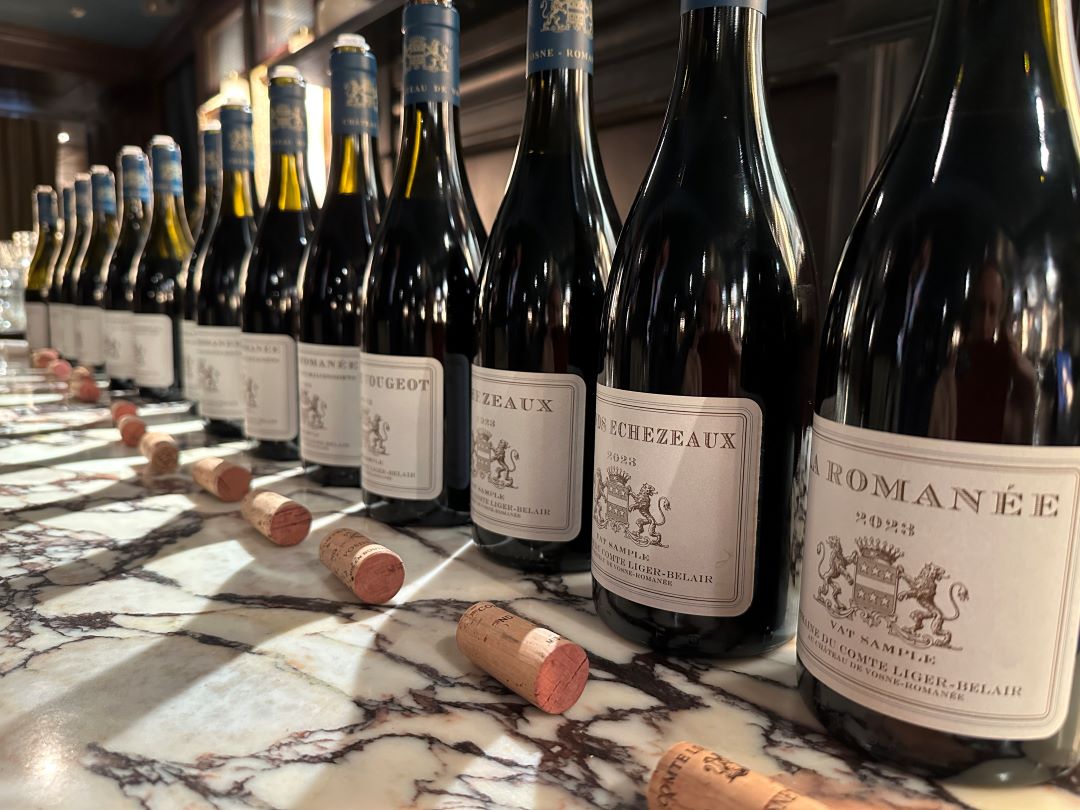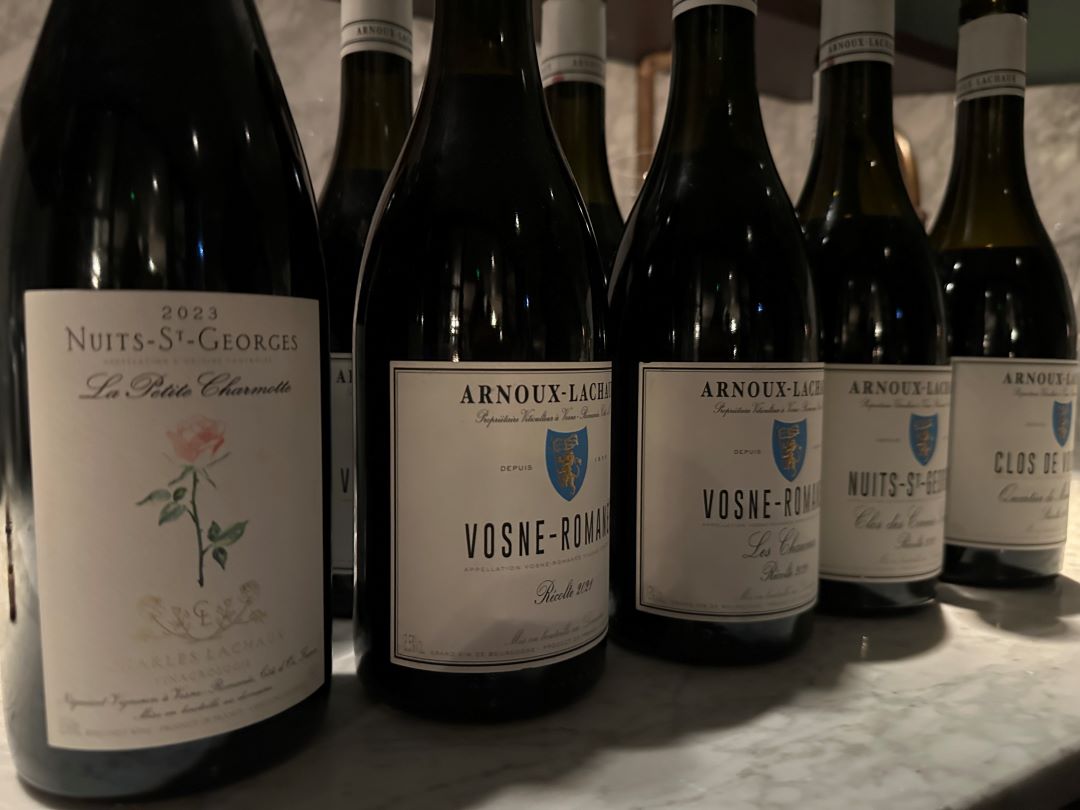Browse using the new Vinous website now. Launch →
Printed by, and for the sole use of . All rights reserved © 2015 Vinous Media
Domaines Great & Small: Burgundy Interim Report
BY NEAL MARTIN | AUGUST 21, 2025
As a somewhat prolific wine writer, it can become tricky to juggle articles. It seemed logical to combine these tasting notes with January’s humongous in-barrel report since they comprise mainly recent releases. On reflection, the winemakers included in this interim report form a microcosm of contemporary Côte d’Or, so I decided to keep them separate, aside from my desire to shine the spotlight on one particular grower.
That’s where I begin. I was hoping to meet winemaker Camille Thiriet last autumn after tasting several impressive bottles from her hand in various restaurants, though alas, neither of us busy bees could find a suitable time. Therefore, I made sure to visit in May during Burgfest week, which turned out to be an opportune moment since Thiriet prefers to show her wines in bottle rather than barrel. That is how I hope to continue henceforth. It also granted us a couple of hours to discuss her backstory.
Camille Thiriet talks me through her new releases.
Thiriet’s winery is located in Corgoloin, a village threaded on the RN74 that most people drive straight through en route to more renowned postcodes. Thiriet is a young winemaker who immediately grabbed my attention. At first, she is guarded in the way she speaks, choosing words carefully, in part due to her apprehension towards journalists. I assure her that we are not all the same, and after an hour, we are chatting ‘til the cows come home. Thiriet comes across as a “true” vigneron, that is to say, without airs or graces or flaunting a stellar array of Grand Crus—she exhibits no desire for celebrity status. If only that could be propagated amongst some of her peers.
Camille Thiriet’s self-effacement is partly down to her feeling like an outsider, as none of her family has any connection to wine. Born in Paris, since childhood Thiriet was fascinated by aromas and trained to be a nose in the perfume industry. “Unfortunately, I found that I am not very good at science,” she admits. So, she sidestepped into another vocation where aromatics are fundamental and enrolled to study viticulture in Beaune. Thiriet felt a little daunted, surrounded by classmates whose families owned domaines, classmates whose futures were prewritten by eventual inheritance. Nevertheless, she had found her calling. Having completed a master's in international wine trade in Bordeaux, Thiriet returned to Burgundy, where she worked for Nicolas Potel, who we tragically lost between my tasting and publishing this piece. It was there that Thiriet met her partner Matt Chittick, who co-runs the domaine.
"I did the picking at Domaine de la Romanée-Conti one year,” Thiriet tells me. “I wanted to know how they make wine. Bernard Noblet [their famous former cellarmaster] taught me about using whole bunches.”
Thiriet started small, borrowing 1,000 euros from her boyfriend after just a few weeks together and vinifying her first wine from purchased fruit from the 2016 vintage. At that time, the couple were running on a shoestring. They didn’t even have any electricity and vinified wines manually, not unlike a 19th-century winemaker. Thiriet was just trying to get a toehold in the Burgundy scene, scratching together a few euros here and there to buy what fruit she could. Jeremy Seysses at Domaine Dujac was another winemaker on hand to offer advice. Thiriet’s breakthrough came when one of her fruit sources, Domaine Gilles Jourdain, offered to sell her his domaine. Wishing to maintain control, Thiriet turned down offers of outside investment and went back to the bank to borrow money.
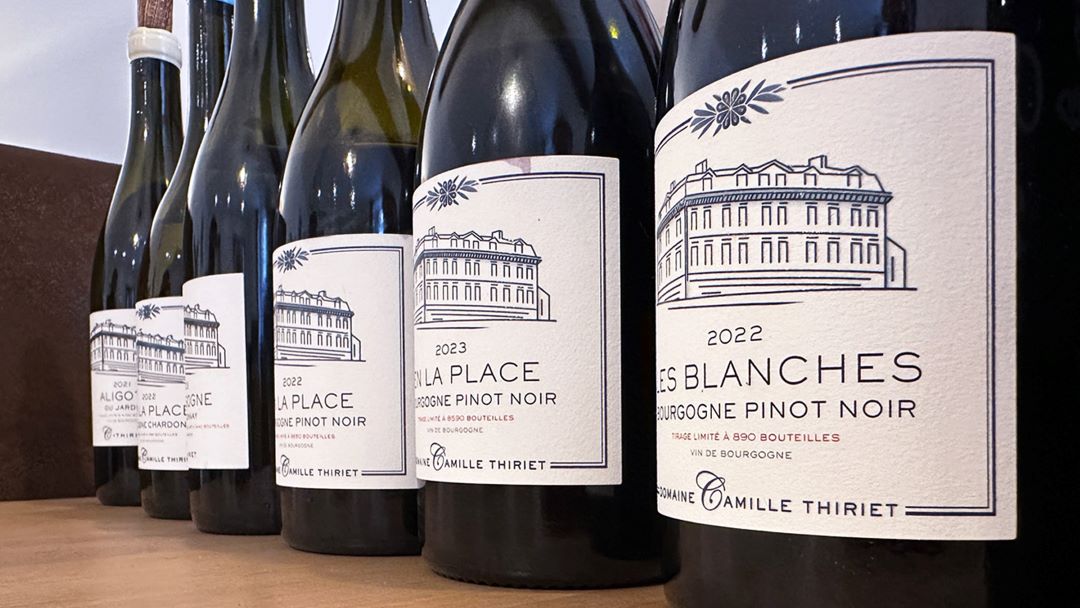
This purchase
included 4.5 hectares of vines as well as a winery that required a little TLC.
Thiriet gave me a quick guided tour. The space is a little cramped in places
but sufficient for their needs, with one building currently undergoing
refurbishment to house the 30-odd pickers. Thiriet has expanded the domaine’s
holdings to include six hectares around the Côtes de Nuits-Villages, modest parcels
where she sees untapped potential, challenging the notion that such sites
cannot produce wines that stop you in your tracks.
Thiriet explained, "We have old vines. The youngest are 60 years old, the oldest are 100. We farm organically. We now also have one young parcel of six-year-old vines, but that did not produce anything in 2024.” Thiriet also continues to buy some fruit in and around Comblanchien.
Readers will find details of the soil types and specific parcels within respective tasting notes. I tasted Thiriet’s whites and reds from the 2022 and 2023 vintages, the former under Diam and the latter under natural cork. If you want to throw your money at some of the ludicrously overpriced/overhyped Aligotés elsewhere, then be my guest, but Thiriet’s articulation of the variety is one I prefer to drink. Interestingly, her Bourgogne Blanc Cuvée Confidentielle is sourced from Mâcon-Cruzille, and perhaps the century-old vines underlie its class. Thiriet’s Chardonnays are not barrelled down straight away. The range of Pinot Noirs hovers at the Bourgogne and Côte de Nuits-Village levels, which is potentially to Thiriet’s benefit, as she concentrates her time and talent into these more modest parcels, imbuing them with individuality and surprising sophistication. You could argue the same for say, Boris Champy or Jérôme Galeyrand, who both exploit comparatively modest holdings to yield cuvées that punch above their weight. “I work mainly with infusion, which means that I do short pumpovers and mostly wet the cap with a bucket at night,” Thiriet explained later. “I do some pigeages of course, but gentle ones with my feet, or my team’s feet, and I often don’t even plunge the entire tank.”
Thiriet’s most telling remark came towards the end of our tasting. “We don't have to be perfect all the time,” said. That’s not something you hear often these days. She might get things wrong, but from where I’m tasting, she is getting most things right.
This article also features wines from another female vigneron—Hombeline Guyon, the fifth generation of the family to farm Domaine Antonin Guyon, alongside her father Dominique. It was actually a chance meeting the previous night and a free hour the following morning that prompted a last-minute visit to this Savigny-lès-Beaune winery. Guyon told me that all the cuvées are destemmed and matured in François Frères barrels, racked after a year and transferred into vat, then bottled between January and April. Guyon expressed that she seeks more elegance from the wines moving forward. To be honest, I did not know what to expect, but I departed quietly impressed by what I tasted, especially the domaine’s 2023 Corton-Bressandes and Meursault Charmes. This is another Savigny-based producer to add to the roster of those making fine and comparatively well-priced wines, though I wager there is better to come from Domaine Antonin Guyon in future vintages.
Other
growers included here preside over more prestigious vineyards, with prices to
match. The contrast between Camille Thiriet and Louis-Michel Liger-Belair could
not be greater. Not to imply one is superior or more important than the other,
but status-wise, their vineyard holdings lie at different ends of the spectrum.
Readers should note that I folded in some older vintages of Liger-Belair Echézeaux
that were available to taste.
I also include recent notes from Charles Lachaux, whose radical techniques include inter alia replacing oak barrels with ceramic vessels. Could this move be the catalyst for a revolution, a winemaker with gnostic knowledge that others will follow? Or is it dicing with the unknown? Nobody, including Lachaux himself, knows how the wines will turn out because the approach is unprecedented. Lachaux remarked how he interpreted the influence of oak as an unwanted intrusion that occludes the purity of terroir expression, before promulgating ancient Burgundies that, lest we forget, were raised in the very vessels now considered persona non grata. Without wishing to sound glib, I have tasted some darn good Pinot Noirs matured in oak barrels over the last quarter-century, many a dab hand articulating their cartographic coordinates with crystalline clarity. So, let’s keep an open mind, not gallop blindly towards eulogising or fetishism, but appraise these in the same way as we would any wine.
I am
fully aware that praise has been lavished upon
these wines and my assessment might be perceived as harsh. However, they deserve
objective analysis if we want to compare them against their peers and judge
whether Lachaux’s decisions were successful. For example, I liked the Bourgogne
Aligoté. But it did not move me. Even Lachaux admitted that it is atypical in
style. That is not necessarily a bad thing, though surely wine should bear
semblance to preconceived ideas of how it might taste. Otherwise, it is
analogous to an artist painting a square and declaring it a “revolutionary
circle.” Elsewhere, I was taken by the lieu-dit-toting 2020 Clos de Vougeot
Quartier de Marei Haut Grand Cru, which incidentally was raised in barrel.
It's no news to anyone that these wines are not the cheapest. Just peruse any wine list. Whilst that connotes quality, it is never a guarantee. It will be fascinating to monitor how these new offerings from Lachaux evolve with age vis-à-vis more traditionally made Burgundy wines. Maybe they will offer drinkers unfettered glimpses at terroirs…just as long as they uphold the first rule of wine: to give sensory pleasure.
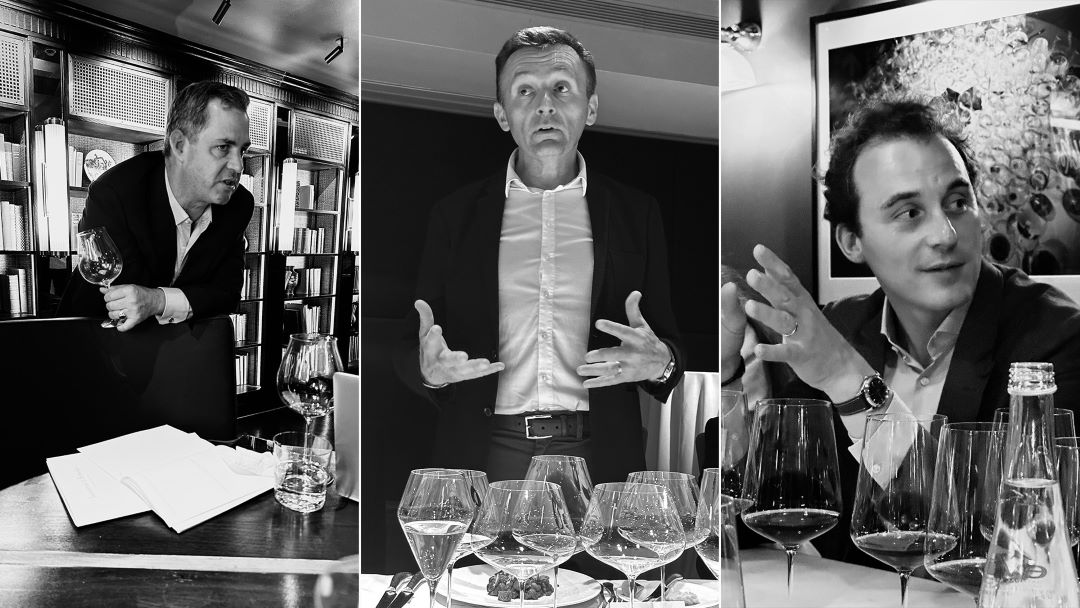
From left to right: Louis-Michel Liger-Belair, Pierre Vincent and Charles Lachaux.
Finally, we have Domaine Leflaive and Pierre Vincent. These are interrelated since the latter served as the former’s winemaker up to and including the 2024 vintage. I tasted the 2023 Leflaive wines in bottle with Brice de la Morandière and Vincent’s wines at a dinner in London with the domaine’s U.K. importer, Private Cellar. Again, there has been some handwringing about the prices of both, though that has not dented demand as the white Burgundy category remains strong. Undeniably, Vincent is a gifted vigneron, a dab hand at this Chardonnay malarkey—that shone through in both sets of wines.
All of these growers produce wonderful wines that will appeal to different Burgundy consumers. Some cannot afford the wines of Comte du Liger-Belair or Leflaive, whilst others will ignore Thiriet’s wines because they are too inexpensive. That is how the Burgundy market is. What motivates your purchase decisions? How much does price and/or name contribute to your pleasure, and to what degree do they sway judgment? Drink what you like. Or perhaps given prices these days, drink what you can afford. Just remember that quality is revealed in the glass, not dictated by a label, price tag, hyperbole or cult fandom.
© 2025, Vinous. No portion of this article may be copied, shared or redistributed without prior consent from Vinous. Doing so is not only a violation of our copyright but also threatens the survival of independent wine criticism.
You Might Also Enjoy
The Lord Giveth…Burgundy 2023, Neal Martin, January 2025
Burgundy 2023: The State of Play, Neal Martin, January 2025
Burgundy 2023 Videos, Neal Martin, January 2025
2023 Burgundy Supplement, Antonio Galloni, February 2025
